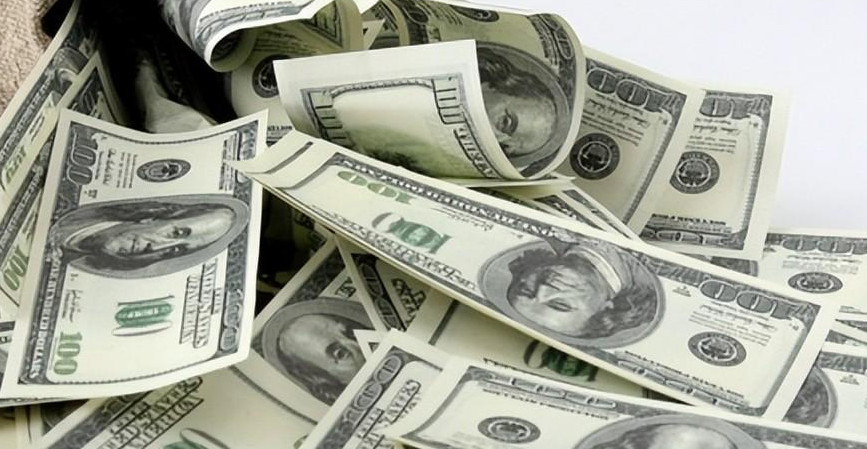Phantom Recession in the U.S. Economy
Advertisements
The recent performance of the U.S. economy has sparked concerns, particularly as the first quarter saw an unexpected decline in GDP. While many analysts had anticipated a gradual growth trajectory, the financial landscape revealed a surprising downturn, driven chiefly by soaring imports that outpaced domestic production. Despite these challenges, one notable aspect of the economic report is the continued resilience of private consumption, a vital pillar of the nation’s economic structure.
In an economy characterized by fluctuations and unpredictability, the question arises: is the United States teetering on the brink of recession? The initial figures from the first quarter report paint a sobering picture. The GDP contracted at an annualized rate of -1.4%, a stark deviation from the 1% growth that economists had projected. This marks the first instance of negative growth in nearly two years, raising red flags among policymakers and economic observers alike.
Breaking down the components of this decline provides further insight into the economic landscape: private consumption experienced a growth rate of 2.7%, surpassing the previous quarter's performance of 2.5%. Conversely, private investment plummeted to 2.3%, a far cry from the staggering 36.7% growth reported in the prior quarter. Exports faced a significant drop of 5.9%, while imports surged by 17.7%, marking a continued trend of increased consumer demand that is not matched by domestic production. Meanwhile, government spending grew by a meager -2.6%, further underscoring the nation's fiscal constraints.
The sharp increase in imports, particularly linked to consumer goods such as automobiles and food products, serves as a critical factor in the GDP's decline. The data suggests that American consumers are still eager to spend, leading to robust import activity, even as domestic manufacturing struggles to keep pace. In turn, this can indicate strong consumer confidence, as households continue to prioritize spending on goods amidst rising prices.
Amidst a backdrop of reduced government spending, the economic outlook also reflects the broader macroeconomic climate characterized by an easing of fiscal stimulus. As government budgets tighten, those in charge may need to recalibrate their strategies, making it increasingly unlikely that new spending initiatives arise in the near horizon. The reduction in federal expenditure underscores a necessary shift as past strategies must adapt to the changing economic realities.
Private investment presents a mixed bag of challenges, primarily hampered by geographic surpluses, particularly in inventory management. Following a robust 2021, where private inventories significantly bolstered GDP, the current landscape indicates a decline driven by cautious corporate spending. Manufacturers are now grappling with surpluses in certain categories, such as auto parts, reflecting underlying supply chain obstacles and a North Star of reduced inventory levels, which may suggest increased production in due course to meet demand.

Despite the cloudy economic forecasts, private consumption continues to shine through. The service sector displayed resilience, driven by a post-pandemic rebound, which has rapidly accelerated consumer spending in sectors like hospitality and entertainment. This rebound appears linked closely to the easing of COVID-19 restrictions, as more Americans venture out to dine, travel, and engage in leisure activities, establishing a pathway for recovery amidst ongoing challenges in consumer goods.
Additionally, disposable income is being supplemented through unprecedented job growth and improved job quality. In the first quarter of 2022 alone, the United States saw non-farm payrolls adding hundreds of thousands of jobs monthly, a trend that significantly outpaced pre-pandemic levels. This positive momentum hints at a sea change within the labor market, as full-time employment becomes more prevalent and reliance on temporary positions diminishes.
Looking ahead, optimism lingers in the air as corporations remain buoyed by strong demand forecasts and rising consumer income levels. The anticipation of a gradual recovery presents opportunities for businesses to bolster inventory and stabilize supply chains, especially as consumer expectations become more aligned with production capabilities. In contrast, the projected increase in capital expenditures signals that businesses are preparing to invest heavily in technology and infrastructure developments, helping to bolster not only their long-term prospects but the broader economy as well.
However, persistent inflation poses its own set of challenges that could stifle momentum. Prices have surged dramatically, with recent consumer price index figures surpassing 8%, owing largely to constraints on supply combined with powerful consumer demand. As energy prices remain elevated amidst the ongoing recovery phases, the erosion of household purchasing power could restrict economic growth if inflationary pressures are not contained. The Federal Reserve faces a delicate balancing act, as increased interest rates aimed at curbing inflation might also dampen economic growth.
In conclusion, the current state of the U.S. economy reveals a complex interplay of resilience amidst challenges. While dips in GDP and soaring inflation raise alarms, the strong private consumption and steady job growth suggest a foundation upon which recovery can build. Yet, internal and external pressures loom, indicating that the road ahead will necessitate careful navigation by policymakers and business leaders alike. Ultimately, sustaining momentum while controlling inflation will be crucial to the long-term prosperity of America's economy.
Leave a comment
Your email address will not be published